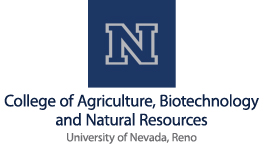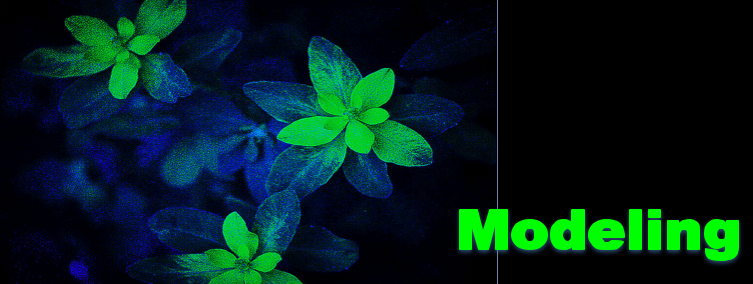Team:Nevada/Modeling
From 2010.igem.org
(→Modeling) |
|||
| Line 7: | Line 7: | ||
== Modeling == | == Modeling == | ||
| + | <p>Plant stress responses are often cascades involving hundreds of genes and gene products. The possible interactions in these cascades are astronomical. Therefore, the 2010 Nevada iGEM team worked with Bioinformatics Professor, Karen Schlauch, to develop a computer model that could quickly analyze possible transcriptional regulation pathways using either microarray data or data from continuous fluorometry experiments. The model was intended to allow for easier identification of promoters useful to the team’s objective of creating remote, plant, biosensors. The model made use of a Boolean network in which transcripts were considered “on” when above a threshold value and “off” for lesser values. The on/off values at given time points were then run through a combinatorial circuit to predict the most probable pathways.</p> | ||
| + | <!--- The Mission, Experiments ---> | ||
| - | |||
| - | |||
| - | |||
| - | |||
| - | |||
| - | |||
| - | |||
| - | |||
| - | |||
| - | |||
| - | |||
| - | |||
| - | |||
| - | |||
| - | |||
| - | |||
| - | |||
| - | |||
| - | |||
| - | |||
| - | |||
| - | |||
| + | ---- | ||
'''We would like to thank the following sponsors for their support in helping us make this project possible.''' | '''We would like to thank the following sponsors for their support in helping us make this project possible.''' | ||
Revision as of 21:46, 18 October 2010
Modeling
Plant stress responses are often cascades involving hundreds of genes and gene products. The possible interactions in these cascades are astronomical. Therefore, the 2010 Nevada iGEM team worked with Bioinformatics Professor, Karen Schlauch, to develop a computer model that could quickly analyze possible transcriptional regulation pathways using either microarray data or data from continuous fluorometry experiments. The model was intended to allow for easier identification of promoters useful to the team’s objective of creating remote, plant, biosensors. The model made use of a Boolean network in which transcripts were considered “on” when above a threshold value and “off” for lesser values. The on/off values at given time points were then run through a combinatorial circuit to predict the most probable pathways.
We would like to thank the following sponsors for their support in helping us make this project possible. Much thanks to the [http://www.cabnr.unr.edu/Students/Majors.aspx Departments of Biochemistry and Biotechnology] and the [http://www.cabnr.unr.edu/Students/Glance.aspx College of Agriculture, Biotechnology and Natural Resources] for their encouragement and support. Thank you [http://www.unr.edu/inbre/ Nevada INBRE] for over $6,000 in support for supplies and registration costs. Thank you to Associated Students of the Univeristy of Nevada for supporting our fund raising efforts. Thank you to [http://www.promega.com/Catalog/CountrySelect.aspx?returnurl=/Default.asp Promega Co.] for free enzyme donations. Thank you to [http://www.invitrogen.com/site/us/en/home.html?cid=covinvggl89100000002336s& Invitrogen Co.] for a discount on our Vector NTI program.

| 
| 
| 
| 
|
|---|
 "
"
